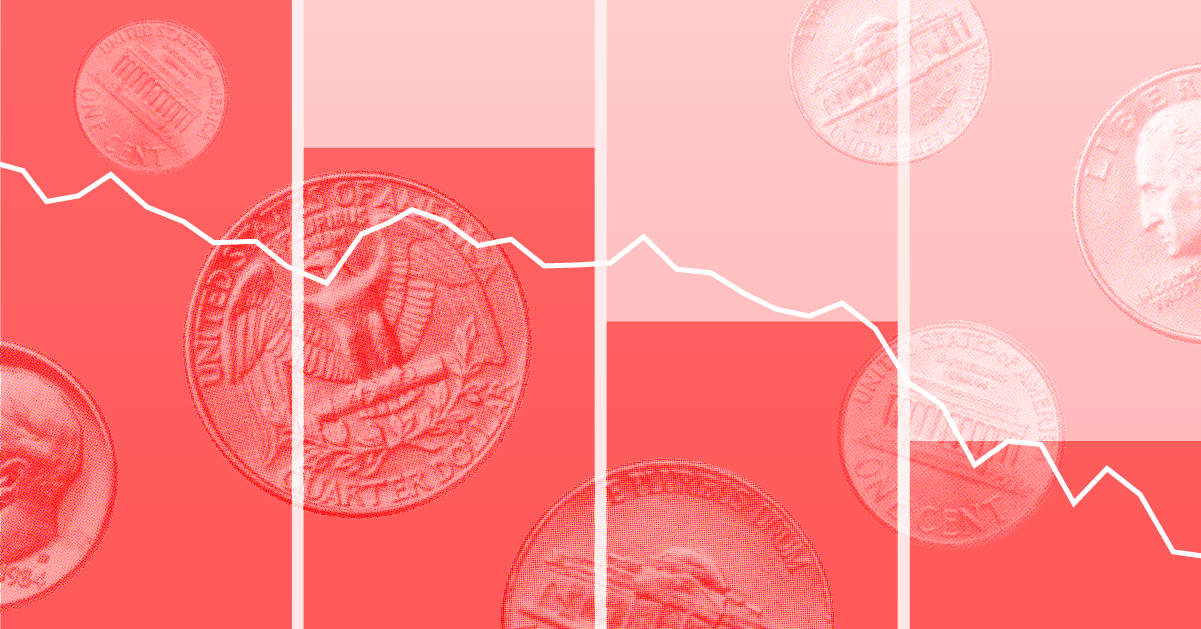The UK financial crisis has not received as much press in the US as that nation's own banking sector troubles but it has proven to be just as deep--if not deeper--than the US crisis. Of Britain's five largest banks at the beginning of the financial crisis, only one--HSBC--has emerged relatively unscathed. Another, Barclays, has so far avoided selling a significant stake to the government but only at the price of dramatically diluting shareholders' stakes in the company. And three--Royal Bank of Scotland, HBOS, and even stodgy Lloyds TSB (the latter two now of course being one: Lloyds Banking Group)--have been forced to sell large majority stakes to the government, largely wiping out shareholder value. In this article, we discuss what brought about this dramatic downfall, explore what separated the "winners" from the losers, and consider what lessons investors in both domestic and international banks can learn from the UK's example.
Background
In both the UK and the US, the banking crisis had its roots in the
interaction between record low savings rates at home and high savings
rates abroad. As these savings flowed into the UK and US, would-be
borrowers found it increasingly easy to access more and more debt at
affordable rates. While debt levels rose in much of the western world,
the rise was especially strong in the UK. A decade ago, total debt
(including corporate, household, and financial-sector debt) in both
countries amounted to about 200% of GDP. By 2007, however, this ratio
had skyrocketed to approximately 500% in the UK, compared to 300% in the
US. Financial sector debt was the largest driver of this increase,
especially in the UK, where it alone amounted to more than 200% of GDP
by the end of 2007.
With money flowing easily and continued economic growth, bankers and regulators alike increasingly envisioned a world of well-understood, controllable risks, light regulation, and an ever-increasing array of innovative financial products. UK banks grew tremendously as they took advantage of the country's notoriously light, "principle-based" regulations, expanding in riskier areas like investment banking and brokerage activities through internal growth and acquisitions. In 1995, the total assets in the UK banking system were well under £2 trillion, and by 2008 this had exploded to nearly £8 billion. This reckless expansion culminated in late 2007 with the battle between Barclays and RBS to take over ABN Amro. RBS eventually won the fight, paying some EUR 71 billion for ABN and, as soon became clear, sealing its fate.
As cheap money flowed in, even banks that were not expanding into investment banking found ways of putting debt to work for them. Traditionally, banks have largely funded their lending operations by taking in deposits. Through 2007, however, banks increasingly funded lending with wholesale funding--essentially short-term loans. This type of funding was often cheaper for banks, as it didn't require maintaining brick-and-mortar branches or administering deposit accounts. Moreover, it was easily available in large quantities, helping banks to support their rapidly growing loan portfolios.
Even more important to the rapid expansion of credit was the securitisation market. Lenders increasingly saw profit opportunities in originating high volumes of loans, more than they were interested in or able to hold on their balance sheets. So lenders bundled up groups of loans that they had made and sold slices of them as securities in the financial markets. The growth of this business was tremendous across the western world, but--again--especially in the UK. In 2000, British financial institutions issued just £20 billion of securitised credit, but by 2007 this had grown some 90-fold to £1,800 billion.
In our opinion, there is nothing inherently wrong with either wholesale funding or securitisation. However, the rapid expansion of these markets, combined with a growing economy and credit losses near historical lows, encouraged reckless behaviour in nearly all financial market participants. While some were clearly worse than others, the interconnectedness of financial markets means that even the most conservative participants can be burned by the sins of their neighbours.
Risks become reality
By mid-2007, cracks had begun to show in financial markets' foundations,
causing investors and bank customers to become skittish. The extent of
the problem became clear as both groups lost confidence in Northern
Rock, a bank that was particularly dependent on wholesale funding and
was known for its loose mortgage lending standards. At the time, the UK
government offered only very limited deposit insurance, and as the
possibility of failure became increasingly apparent, depositors lined up
around the block to withdraw their deposits and wholesale funding dried
up. The UK government was forced to prop up the failing bank and by
early 2008 to nationalise it entirely.
By mid-2008, financial markets had begun to understand the extent to which credit standards had slipped and risks had increased during the preceding years. Unsure about how large losses might eventually turn out to be or where they would lay, financial market participants became increasing reluctant to lend to each other, even in the usually very liquid overnight interbank markets. This reluctance to lend, combined with global fears about falling property prices, sparked a downward asset-price spiral that forced bank after bank to take large write-downs on many of their assets. Without a doubt, many of these assets represented credits that never would have been extended except for the blind optimism caused by easy money and an asset-price bubble. But other assets represented the debts of individuals and companies that were reasonably able to repay their obligations under ordinary circumstances but whose businesses and ability to pay were hobbled by the sudden withdrawal of available credit.
Bank bailouts begin
As losses piled up, investors and central banks were forced to
orchestrate a series of bailouts for banks across Europe and the US. In
our view, the UK has been more aggressive than the US in rescuing its
banks, and especially in doing so under fairly harsh terms. In the US,
the government has been reluctant to nationalise failing institutions,
or even to take majority ownership, but this has not been true in the
UK. The first significant step came in September 2007, when the UK
stepped in to give emergency funding to Northern Rock and, later, to
insure its deposits in order to halt a run on the bank. By February 2008
the bank was nationalised entirely. In April 2008, RBS, struggling under
write-downs, many related to its acquisition of ABN Amro, announced a
£12 billion capital raising, the largest in British history. In June,
Barclays joined RBS, raising £4.5 billion. Soon after, HBOS followed,
announcing a £4 billion rights issue. As fears mounted about what lurked
in HBOS' books, however, very few investors opted to buy shares and the
rights issue failed. HBOS got the money, as the issue was fully
underwritten by its investment banks, but the failure increased
investors' nervousness about UK banks' soundness and made future private
capital raisings significantly more difficult.
Mortgage delinquencies continued to rise across the UK, putting the country's lower-quality lenders under severe pressure. By September, HBOS, long considered a loose underwriter, announced that it had agreed to be acquired for much less than book value by Lloyds TSB. While we understand why the acquisition was attractive for Lloyds--it significantly increased the bank's retail market share--the merger was undertaken in haste and likely under pressure from the government. As would later become clear, Lloyds--well-known as a conservative lender--failed to understand just how far HBOS' credit standards had slipped and how many bad loans lurked in its portfolio. A few days later, the UK nationalised Bradford & Bingley, a struggling mortgage lender.
When its more moderate actions, such as increasing deposit insurance and nationalising the lowest-quality banks, failed to reassure investors by October, the UK announced a rescue package that made financing available to banks in the form of preference shares but required the banks to increase their capital by at least a collective £25 billion. Within days it became clear that RBS, Lloyds, and HBOS would be unable to raise capital in the private market, and the banks accepted a collective £37 billion of new capital from the government. In exchange, the banks gave the government large stakes in their firms--60% for RBS and about 40% for the merged Lloyds-HBOS--and a limited say in how their businesses would be run. Barclays announced its intention to raise capital privately and was eventually able to do so, although under even harsher terms than those offered by the government. Only HSBC, arguably the healthiest UK bank, escaped relatively unscathed and announced that it would inject capital from its parent company into its UK subsidiary. Later, when these bailouts would prove insufficient, the government swapped its preferred shares for common equity in RBS and the combined Lloyds-HBOS in exchange for guaranteeing a sizeable chunk of their assets.
By the time of this writing, the costs to shareholders have become enormous. Government ownership of Lloyds Banking Group will increase to as much as 65%, and RBS has been almost completely nationalised, with government ownership reaching as high as 95%. While Barclays has avoided selling a stake to the government, its multiple rounds of capital raisings have significantly diluted its shareholders' stakes in the company. It is also likely to sell one of its crown jewels, its iShares exchange-traded funds business, in an effort to raise more capital at the cost of permanently reducing its earnings stream.
Lessons for investors
One of the most obvious lessons investors in equities can learn from the
UK bank crisis and subsequent bailout is to beware of creeping
government involvement in the operations of the businesses they are
propping up. Despite repeated UK government assurances at the beginning
of the bailouts that it would act as a hands-off investor, we have since
seen the government turn up the heat on UK banks, insisting that they
increase mortgage lending and lending to small firms. While we
appreciate that taxpayers have the right to direct the business
practices of firms that they have majority stakes in, we note that these
are still, nominally at least, publicly held firms. Policy-oriented
business practices are, in our opinion, likely to involve throwing good
money after bad and may well result in shareholders subsidising state
policy.
We also think that the aftermath of the UK bank crisis speaks clearly to the importance of diversification--much of HSBC's and Barclays' strength has come from their international operations--but makes clear that diversification is typically much more valuable when it is built organically rather than through acquisitions. Diversification offers the opportunity to buffer unexpected losses from one sector or geographic area with income from another. Moreover, the crisis reminds us of the dangers of acquisitions more generally, as managers rarely know businesses they acquire--and the risks they generate--as thoroughly as the businesses they have built themselves. The worst of the damage suffered by UK banks during this crisis was brought on by acquisitions. RBS, while never the best bank, was largely undone by its ill-considered acquisition of ABN Amro, whose risks RBS failed to appreciate. It was a fate only narrowly escaped by RBS' rival bidder, Barclays, who would likely have faired no better had it won the bidding war, in our opinion. The conservative stalwart Lloyds has admitted that it likely would not have needed government assistance if it had not taken over HBOS. Even HSBC, clearly the strongest of the bunch, has suffered enormous losses because of its unwise acquisition of the US subprime lender Household International in 2002. The remaining open question on this subject is what will be the outcome of Barclays' purchase of much of Lehman Brothers' operations? While further increasing its investment banking operations clearly increases Barclays' risks, we take some comfort in knowing that Barclays left most of Lehman's risky assets behind when it bought the firm out of bankruptcy.
Finally, we think that the crisis has thoroughly discredited the UK's movement toward lighter-touch, principles-based regulation. Clearly, banks in the UK (as in the US) took on risks in the period leading up to the crisis that were poorly understood by both the banks' managers and their regulators. Government leaders in the UK have been pushing for new, international bank regulations in an effort to limit the systemic risks large banks create for the global financial system as well as to decrease the risks posed by banks operating across international borders. While we have little hope that these efforts will be immediately successful, we more generally think that bank regulation is likely to become much stricter in the future. While this may or may not reduce the systemic risks that large banks create, it will almost certainly significantly reduce banks' levels of innovation and profitability.

























